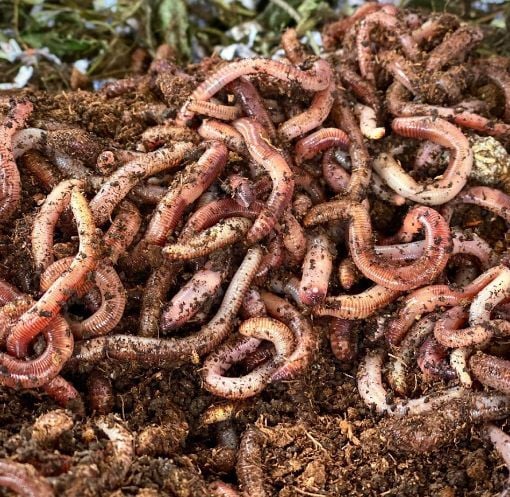The world beneath our feet is teeming with life, and understanding the biological processes that make our soil thrive is more than just academic—it’s essential for the future of our planet. As an advocate for environmental education, I’m thrilled to share how schools and educational institutions are turning to educational composting projects to enrich their curriculum and foster sustainable habits in the next generation.
The Living Laboratory: Composting in Schools
Composting is a biological process that decomposes organic waste, turning it into rich soil, a transformation akin to magic in the eyes of students. By integrating composting projects into the school curriculum, we’re not just teaching science; we’re encouraging hands-on interaction with the natural cycle of life.
-
The Cycle of Life
From Waste to Wealth Organic waste, including fruit peels, vegetable scraps, and paper products, are layered in a compost bin or pile. Microorganisms, the tiny yet mighty engineers of our ecosystem, get to work breaking down these materials. Students witness the transformation of what was once considered waste into black gold—nutrient-rich compost.
-
The Critters’ Contribution
Worms and insects become integral to the composting process. A class can maintain a worm bin, where red wrigglers convert scraps into vermicompost. Observing these creatures up close provides invaluable lessons on their roles in the ecosystem.
Biology Behind Composting: A Microscopic Universe
Composting is more than decomposition; it’s a bustling microscopic universe. Within a compost pile, bacteria, fungi, and protozoa conduct a symphony of decomposition. Here’s how we can explore this in the classroom:
-
The Role of Microbes
Microorganisms are the workhorses of composting. Students can take samples and view them under microscopes, identifying various bacteria and fungi, and understanding their functions in breaking down organic materials.
-
Oxygen and Temperature
Aerobic bacteria require oxygen to thrive, and their activity raises the temperature of the compost pile. By measuring temperature changes, students learn about the thermal properties of microbial metabolism.
-
Moisture and pH Levels
Maintaining the right moisture and pH level is critical. Through regular monitoring, students learn about the importance of balance in natural processes and the effects of varying environmental conditions on decomposition rates.
Sustainable Practices: The Ripple Effect of Composting Projects
Composting in educational settings extends beyond science. It’s a model for sustainable practices and environmental responsibility:
-
Waste Reduction
By composting, schools can significantly reduce their waste output, leading to discussions on waste management and the importance of reducing, reusing, and recycling.
-
Soil and Plant Science
The use of finished compost in school gardens links composting to lessons in soil science and horticulture. Students see firsthand how compost improves soil structure, water retention, and plant growth.
-
Community Involvement
Composting projects can expand to include the local community. Families can contribute kitchen scraps, and finished compost can be shared with community gardens, creating a sense of shared environmental stewardship.
Integrating Composting into the Curriculum: A Multidisciplinary Approach
-
Science
Lessons on ecosystems, food webs, and nutrient cycles are enhanced by composting activities. Students can design experiments to test the effects of compost on plant growth or investigate how different materials decompose.
-
Mathematics
Composting offers real-world applications for math, from measuring compost temperatures to calculating decomposition rates and quantifying waste diversion.
-
Social Studies
Discussing the global impact of waste management and sustainable practices connects students to the broader implications of composting, fostering global awareness and citizenship.
-
Language Arts
Students can journal their composting observations, write persuasive essays on the benefits of composting, or create instructional materials to educate others about the process.
The Ripple Effect: Educational Composting and Beyond
Educational composting projects are more than a school initiative; they’re a catalyst for change, inspiring students to become environmentally conscious citizens. By immersing in the biology of composting, students gain a profound appreciation for the intricacies of our ecosystem and the importance of sustainable living.
The future is bright, and with each composting project, we plant the seeds of environmental responsibility that will grow into a healthier, more sustainable world.
Let’s turn the tide together—one compost heap at a time.









2 thoughts on “The Dynamic World of Educational Composting Projects | Biology of Composting”
So far I’ve killed about 600 worms. The first 200 I put in compost that was too hot, baked them right away. The next 200 I put in Miracle-Gro. Turns out Miracle-Gro has chemicals in it that kill worms. The last 200, the ones that I am slowly killing now are a mystery. They are in a thirty gallon contain, in temperature controlled room, the soil is natural top soil and sandy loom soil. The soil stays at 70 degrees F. The soil is damp, not wet. There is ample food and the container is ventilated. I’m at a lost.
Try using “browns” (leaves, shredded paper, cardboard, etc) as bedding, rather than soil. This post https://unclejimswormfarm.com/composting-worms-mistakes/ says to use organic material that will decompose as bedding. The species we use for worm composting actually do most of their living above the surface of soil, so maybe trying to compost in soil is harming them. Good luck!